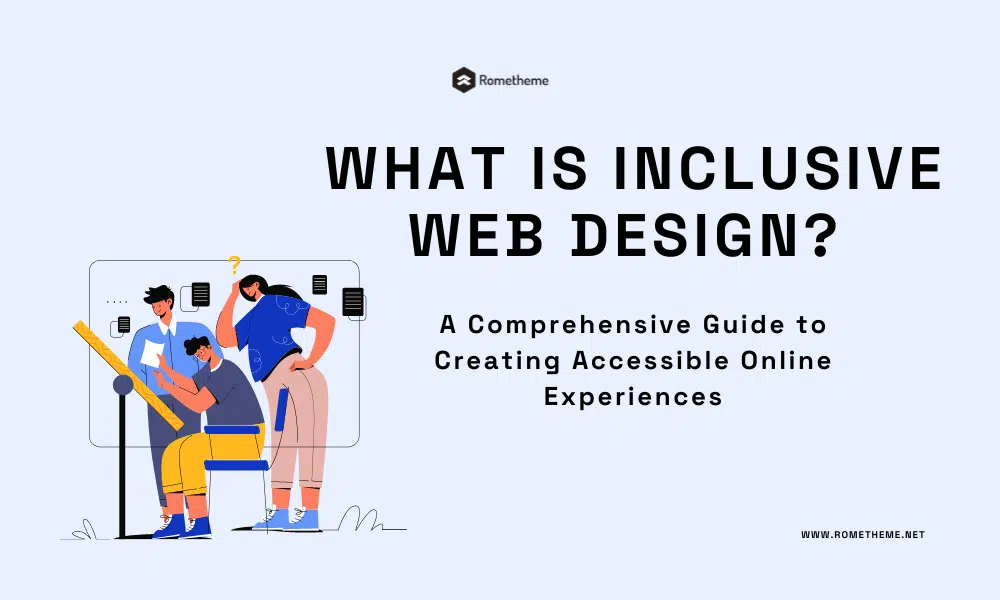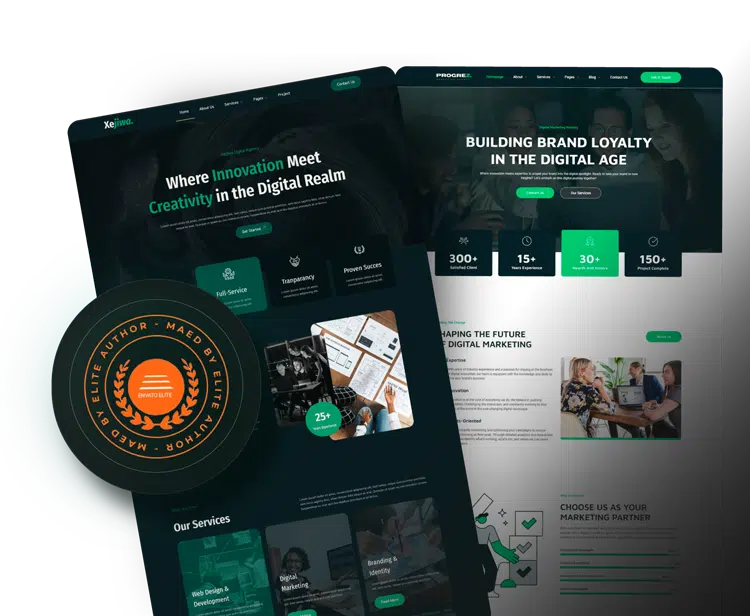In today’s digital age, websites play a fundamental role in our lives. Whether it’s shopping, socializing, or accessing information, the Internet has become an integral part of our daily routines. However, not all websites are designed to accommodate everyone. This is where inclusive web design comes into play. In this article, we will explore what inclusive web design is, its significance, and how you can implement it to create accessible online experiences for all users.
What Is Inclusive Web Design?
Inclusive web design refers to the practice of creating websites that are accessible to individuals with varying abilities, disabilities, and preferences. It aims to remove barriers and ensure that everyone, regardless of their physical or cognitive abilities, can navigate, interact, and understand the content on a website.
Implementing inclusive web design involves considering the diverse needs of users and providing solutions to accommodate them. It goes beyond mere compliance with accessibility standards and focuses on creating a welcoming and inclusive digital environment for all individuals.
Why Is Inclusive Web Design Important?
Inclusive web design is crucial for several reasons. Firstly, it promotes equal access to information, products, and services for all users, regardless of their abilities or disabilities. It eliminates barriers that may prevent individuals from fully engaging with a website’s content.
Moreover, inclusive web design has a positive impact on user experience. By considering the diverse needs of users, websites become more intuitive, easy to navigate, and enjoyable to use. This not only benefits individuals with disabilities but also enhances the overall user experience for all users.
In addition, implementing inclusive web design is essential for legal compliance. Many countries have legislation in place, such as the Americans with Disabilities Act (ADA) in the United States, that requires websites to be accessible to individuals with disabilities. Non-compliance can result in legal consequences and reputational damage.
The Principles of Inclusive Web Design
To create an inclusive website, it’s important to follow certain principles that prioritize accessibility and usability for all users. Let’s explore some key principles of inclusive web design:
1. Perceivable
Content on a website should be perceivable by all users, regardless of their sensory abilities. This includes providing alternatives for non-text content, such as images and videos, through captions, alt text, and transcripts. It also involves ensuring proper color contrast for individuals with visual impairments.
2. Operable
Websites should be operable by individuals with various abilities and disabilities. This means designing intuitive navigation, providing clear instructions, and making interactive elements accessible through keyboard navigation. Additionally, it’s important to avoid using elements that can trigger seizures in individuals with photosensitive epilepsy.
3. Understandable
Website content and functionality should be easily understandable to all users. Using plain language, clear headings, and consistent navigation helps individuals with cognitive disabilities navigate and comprehend information effectively. Providing instructions and feedback that are easy to comprehend is also essential.
4. Robust
A robust website is compatible with a wide range of devices and assistive technologies. This includes using standard web technologies and ensuring compatibility with different web browsers and screen readers. It’s important to regularly test the website’s compatibility and make necessary adjustments.
Benefits of Inclusive Web Design
Implementing inclusive web design offers numerous benefits for both users and website owners. Let’s explore some of the key advantages:
1. Enhanced User Experience
By creating websites that are accessible and inclusive, you provide
a seamless and enjoyable user experience for all individuals. Users can easily navigate, interact with, and understand your website’s content, leading to higher engagement and satisfaction.
2. Increased Reach and Engagement
An inclusive website opens doors to a broader audience. By accommodating diverse needs, you can reach individuals with disabilities, older adults, and those with different language preferences. This expands your potential customer base and fosters greater user engagement.
3. Improved SEO
Inclusive web design practices often align with search engine optimization (SEO) guidelines. Search engines prioritize websites that are user-friendly, have clear navigation, and provide valuable content. By implementing inclusive design, you enhance your website’s visibility and rankings in search engine results.
4. Legal Compliance and Avoidance of Lawsuits
Creating an inclusive website ensures compliance with accessibility laws and regulations. This helps protect your organization from potential lawsuits and legal consequences resulting from non-compliance. By adhering to inclusive web design principles, you mitigate the risk of facing accessibility-related legal issues.
Best Practices for Inclusive Web Design
Now that we understand the importance and benefits of inclusive web design, let’s delve into some best practices to help you create an inclusive and accessible website:
1. Conduct Accessibility Audits
Perform regular accessibility audits using tools like WAVE or Lighthouse to identify any accessibility issues on your website. Address these issues promptly to ensure compliance and improve user experience.
2. Use Descriptive Alt Text for Images
Provide meaningful alt text for images, describing their content or purpose. This allows individuals using screen readers to understand the context and meaning conveyed by the images.
3. Ensure Keyboard Accessibility
Ensure that all interactive elements, such as menus, forms, and buttons, can be accessed and used with a keyboard. This is essential for individuals who rely on keyboard navigation instead of a mouse.
4. Design Clear and Consistent Navigation
Create a clear and consistent navigation structure throughout your website. Use descriptive headings and labels to guide users and help them understand the organization of your content.
5. Optimize Color Contrast
Ensure sufficient color contrast between text and background elements to make the content readable for individuals with visual impairments or color vision deficiencies. Use tools like WebAIM’s Color Contrast Checker to assess and adjust color combinations.
6. Provide Transcripts and Captions
For audio and video content, provide transcripts and captions to make the information accessible to individuals with hearing impairments or those who prefer to read the content instead of watching or listening.
Frequently Asked Questions (FAQs)
Q1: What is the difference between accessibility and inclusive web design?
Accessibility focuses on ensuring equal access to web content for individuals with disabilities. Inclusive web design, on the other hand, extends beyond disabilities and aims to create an inclusive experience for all users, regardless of their abilities or preferences.
Q2: Are there any legal requirements for website accessibility?
Yes, many countries have legislation in place to enforce website accessibility, such as the ADA in the United States, the Equality Act in the United Kingdom, and the AODA in Canada. It is essential to comply with these laws to avoid legal consequences.
Q3: Can inclusive web design benefits users without disabilities?
Absolutely! Inclusive web design benefits all users by creating user-friendly and intuitive websites. It enhances user experience, increases engagement, and expands your website’s reach to a wider audience.
Q4: How often should I test my website for accessibility?
Regular accessibility testing is recommended to identify and address any issues promptly. It’s advisable to conduct accessibility audits during the development phase and perform periodic checks as you update and modify your website.
Q5: What role does color contrast play in inclusive web design?
Color contrast ensures that text and visual elements are
distinguishable, making them accessible to individuals with visual impairments. By optimizing color contrast, you enhance readability and ensure that the content is accessible to all users.
Q6: Can I retrofit an existing website to be more inclusive?
Yes, it is possible to retrofit an existing website to improve inclusivity. By identifying accessibility issues and gradually implementing changes, you can enhance the accessibility and inclusivity of your website over time.
Conclusion
Inclusive web design is essential for creating accessible online experiences for all users. By implementing inclusive design principles and best practices, you can ensure that your website accommodates diverse needs and provides an enjoyable user experience. Remember, inclusivity benefits not only individuals with disabilities but also enhances usability and engagement for all users. By embracing inclusive web design, you foster a more inclusive digital landscape and contribute to a more equitable online environment.
Visit our website to browse our stuff and follow our Instagram for great content!
Website: www.rometheme.net
Instagram: rometheme_studio









